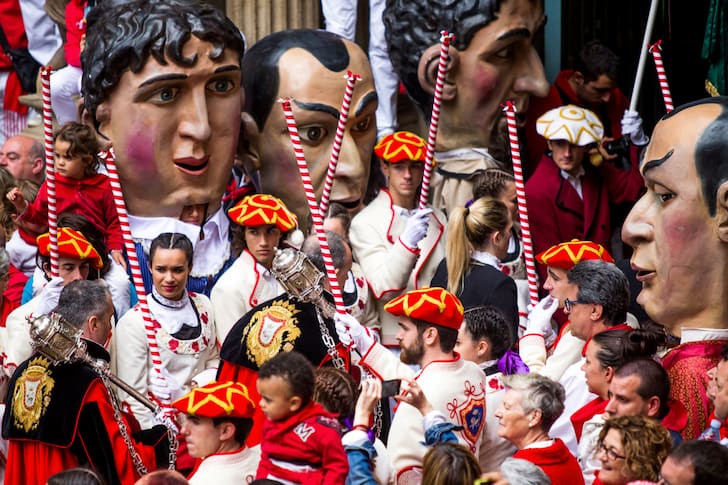The celebration of the San Fermin festival has grown from the combination of two different events, both originating some time in the Middle Ages. The first event was the veneration of Saint Fermin, a Christian martyr and one of the patron saints of Navarre. According to legend, Fermin was the son of a Roman senator from Pamplona and the city’s first bishop. He was martyred either during the Decian or during the Diocletianic persecution, and some of his relics were brought to Pamplona in 1196. It was then that the city decided to mark the occasion with an annual festival held on October 10.
The second event was the agricultural fair held in Pamplona every summer. Cattle merchants would come into town with their animals, and eventually bullfighting became part of the event. The first recorded mentions of bullfighting date back to the 14th century. In 1591, the festivities dedicated to Saint Fermin were moved to July to be held concurrently with the fair. This is considered the beginning of the present-day San Fermin festival, or Sanfermines.
The festival officially opens at noon on July 6, when a firework called chupinazo is fired from the city hall balcony. This tradition is relatively new as it started in 1941. The firework is followed by the Riau-Riau, a procession where city council members walk from the city hall to the nearby chapel dedicated to Saint Fermin, dancing to waltz music along the way.
The San Fermin festival begins in earnest on July 7, when thousands of people participate in the procession carrying the statue of Saint Fermin through the city streets. The procession includes the Bishop of Pamplona, the city mayor and other political figures, dancers, entertainers, and the so-called gigantes (giant papier-mâché puppets manipulated from the inside). It is followed by a mass in the city cathedral.
The festival lasts for more than a week, and each day is filled with traditional events and activities. Daily events include the gigantes y cabezudos parade in the morning, with giant papier-mâché figures dancing to traditional music; Basque rural sports demonstrations and competitions (wood chopping, dragging games, stone and anvil lifting, hay bale tossing, hole drilling, etc.); bullfighting; and nighttime firework displays at the citadel park.
Probably the most famous event of the San Fermin festival is the running of the bulls (encierro or los toros de san Fermin). It involves hundreds of people running in front of six fighting bulls that are guided by oxen and shepherds down an 825-meter stretch of narrow streets in Pamplona’s old town. Held every day of the festival, the run lasts for about three minutes and ends in the bullring, where the bullfight takes place later in the afternoon.
Another notable tradition of the San Fermin festival is El Struendo (“The Roar”). Unlike most other events, it is held only once during the festival, usually on a weekday. A crowd gathers in front of the city hall right before the clock strikes midnight and makes as much noise as possible for the next few hours, using cymbals, drums, pans, whistles, etc.
The festival ends at midnight on July 15. Once again, a crowd gathers at the city hall, this time for the closing ceremony that involves lighting candles and singing the traditional song “Pobre de Mi” (“Poor Me”), followed by a spectacular fireworks display.
In 2020 and 2021, the festival of San Fermin was canceled due to the COVID-19 pandemic.

Photo: © Javier Martinez, sanfermin.com




